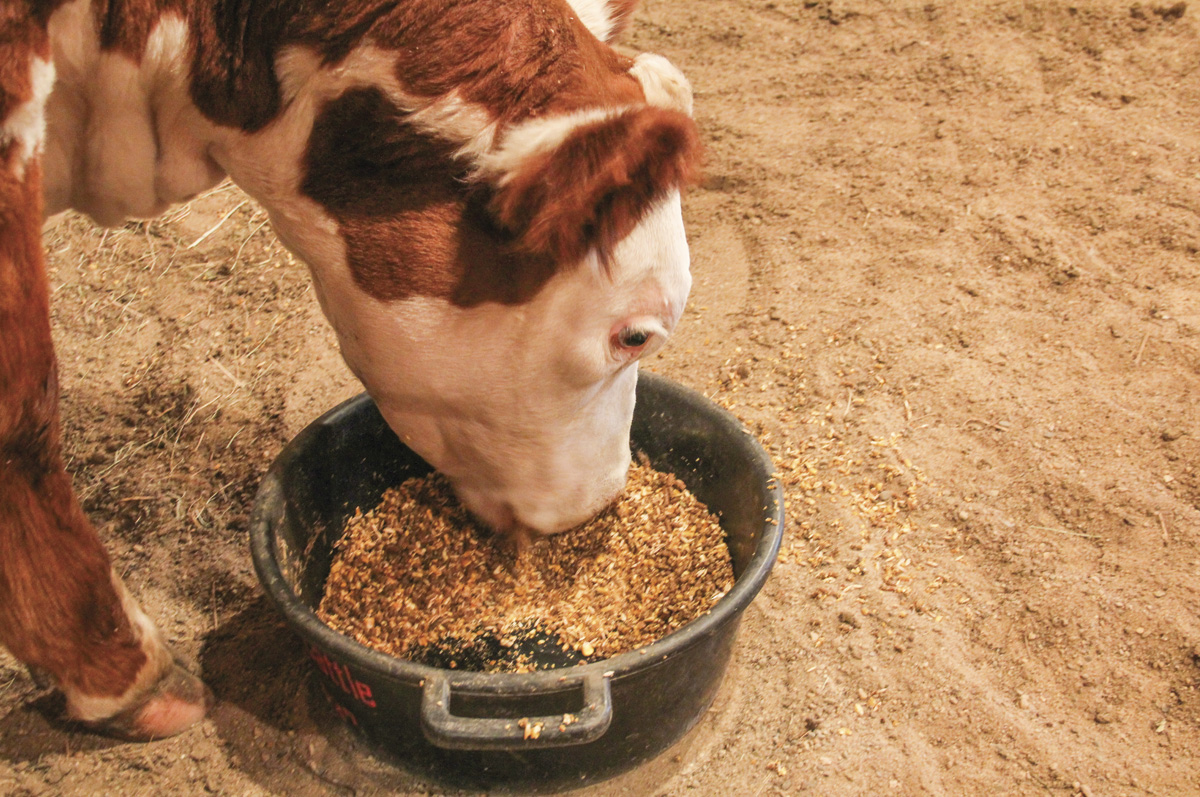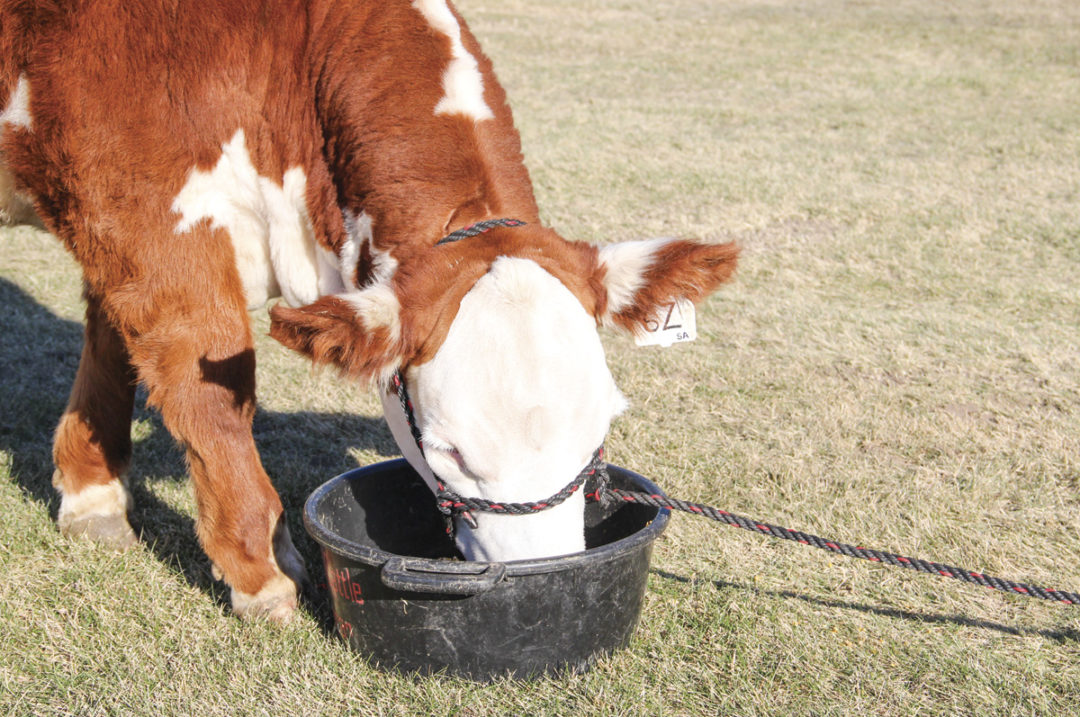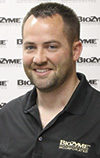There’s nothing quite like the county fair. It’s one of those places where your senses come alive with the sights, sounds and smells that will develop into a lifetime of memories. If you are a young livestock exhibitor, those sights, sounds and smells might be a little different than those of the typical fairgoer, but the memories made will be even more meaningful.
You’ve no doubt been working on your show cattle for several months now. The feeding, halter breaking and working hair is probably all part of your daily routine. Many young exhibitors don’t realize that proper nutrition and development of their animal is more important than anything they can do with a comb, glue or a set of clippers. With just a few weeks or a few months until your endpoint, now is the critical time to focus on the final point of your animals’ nutritional journey.
Since water is the most important nutrient for any species, it is vital to ensure your show steers and heifers have ample fresh water year-round. In the summer, it is even more important to make sure that water is clean and cool, not only for temperature regulation and proper animal hydration, but also because water helps promote feed intake. Keeping animals on feed is critical for success at home as well as exhibiting at the fair.
Just like humans, not all show livestock are created equal. A variety of sizes, shapes and kinds exist in the show stock realm, but the key to developing a nutritional program is to fully understand the traits of your animal. Some cattle are moderate and fatten quicker, while some have more muscle than others; the list goes on. If you aren’t sure where your animal’s strengths and weaknesses are, just ask. Most breeders, ag teachers and extension agents want to see you succeed, and think about the knowledge and tips you can gain by building a relationship with an experienced livestock professional.
Your project should have an end goal or purpose. Market cattle are destined for the food chain, and breeding heifers should stay in your herd for years. This means that certain traits are weighted differently in the show (breeding versus market), so you should feed accordingly. Lastly, market cattle are harvested after the show and heifers should go on to be productive cows in a herd. Think about how neglecting nutrition during their show careers can impact their productivity down the road. Ribbons and banners are mere moments of success, so don’t lose sight of the “big picture” of what that heifer can do for you in the pasture.
 Protein is the most important nutrient to consider when preparing market cattle for the show ring. Photo courtesy of BioZyme Inc.
Protein is the most important nutrient to consider when preparing market cattle for the show ring. Photo courtesy of BioZyme Inc.
For market cattle, muscle and finish are the highest priority, because their value in the industry is predicated on their quality and yield grade. Protein is the first nutrient to come to mind when we mention muscle. Protein is related to muscle mass and expression, but there’s a lot to consider. Not all proteins contain the same kind of amino acid profile, and some protein sources are more digestible than others. This means adding more and more protein supplements to a complete feed may cause an imbalance, and when there isn’t enough energy in the diet, muscle accretion cannot occur properly. It’s not all about the protein shakes and looking like a bodybuilder. Make sure your feeding program contains enough energy for them to grow and develop. As they mature, they can lay on an appropriate degree of fat cover to have a market-ready, winning look.
Heifers are different. They have a long, productive life ahead of them, so I think it’s best to develop them more slowly. Complete feeds that are higher in fiber can deliver enough energy to these heifers without getting them too fat too quickly. This is paramount in keeping a fresh, feminine look. Plus, fibrous sources help to optimize rumen integrity and function while promoting gut health. Proper gut function and health allow cattle to partition the extra nutrition from your complete feeds to show ring traits like healthy skin and hair. My hair and fingernails grow better when I’m healthy and eating right, and cattle are no different.
Don’t forget the hay. Remember, ruminants are designed to graze and turn fibers we can’t consume into protein products. Hay consists of carbohydrates as a structural fiber. Hay is important for feed utilization in two ways. First, it slows down passage rate and allows the rumen more time to digest your expensive feeds. Second, it helps buffer rumen pH and prevent acidosis by stimulating more rumination or “cud chewing.” Absolutely always offer your animals hay throughout the day and night. My biggest mentors always told me hay makes champions.
Finally, preventing summer stressors will help your show cattle more readily stay on feed and water. Do your research to find and utilize a supplement that will help support health when heat and insects are a challenge.
Proper health and nutrition will help you have a memorable county fair. Keep your show calves on the right track so one of those exciting sights of your fair may be a purple banner.








